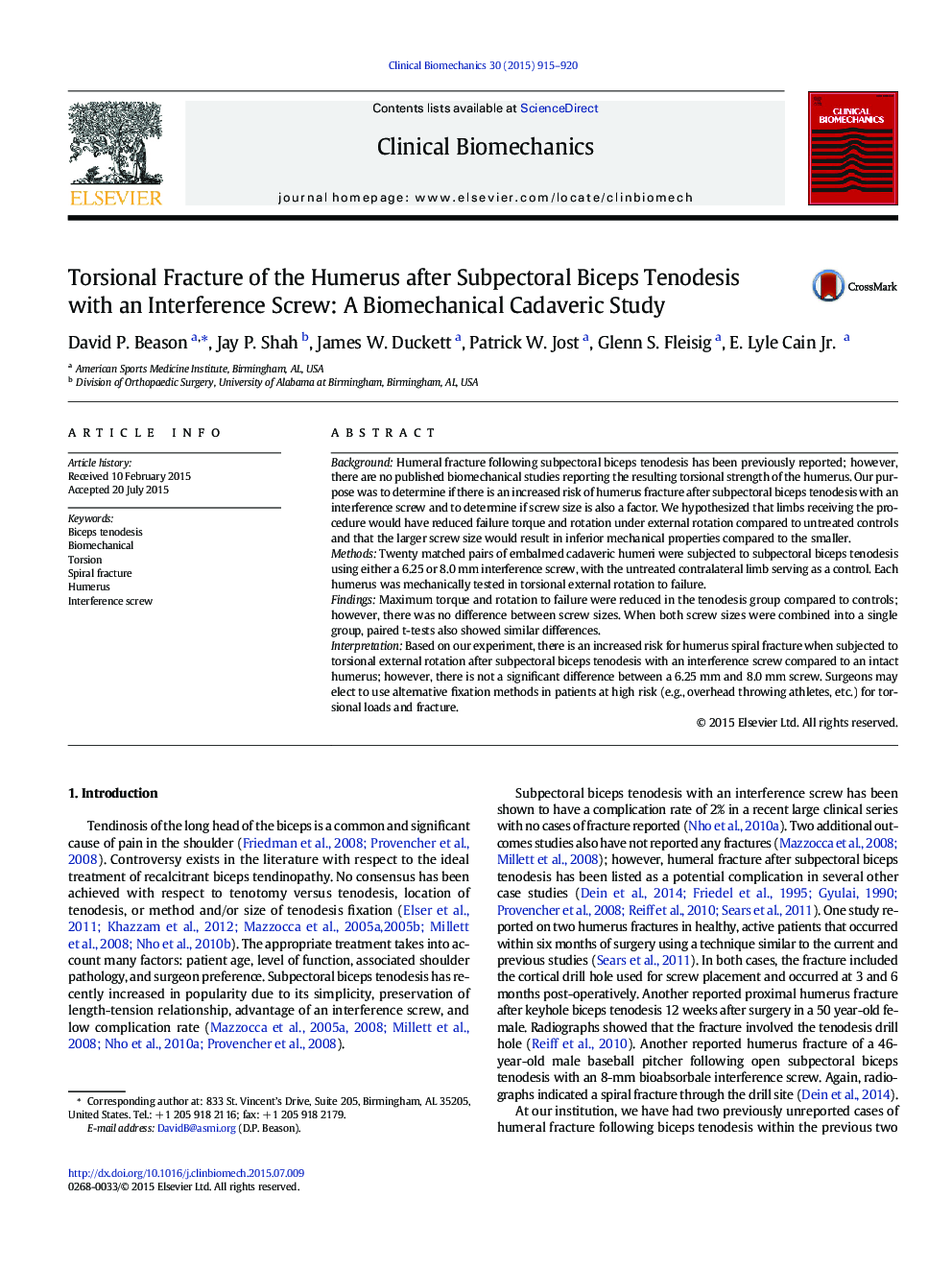| Article ID | Journal | Published Year | Pages | File Type |
|---|---|---|---|---|
| 4050214 | Clinical Biomechanics | 2015 | 6 Pages |
•Embalmed cadaveric humeri were subjected to subpectoral biceps tenodesis using two different screw sizes; with contralateral limbs remaining unaltered.•Humeri were mechanically tested in torsion to failure.•Maximum torque and fracture torsion angle are reduced in subpectoral biceps tenodesis with an interference screw, thus leading to an increased risk for humerus fracture in external rotation of cadaveric humeri.•Screw size does not have a significant effect.
BackgroundHumeral fracture following subpectoral biceps tenodesis has been previously reported; however, there are no published biomechanical studies reporting the resulting torsional strength of the humerus. Our purpose was to determine if there is an increased risk of humerus fracture after subpectoral biceps tenodesis with an interference screw and to determine if screw size is also a factor. We hypothesized that limbs receiving the procedure would have reduced failure torque and rotation under external rotation compared to untreated controls and that the larger screw size would result in inferior mechanical properties compared to the smaller.MethodsTwenty matched pairs of embalmed cadaveric humeri were subjected to subpectoral biceps tenodesis using either a 6.25 or 8.0 mm interference screw, with the untreated contralateral limb serving as a control. Each humerus was mechanically tested in torsional external rotation to failure.FindingsMaximum torque and rotation to failure were reduced in the tenodesis group compared to controls; however, there was no difference between screw sizes. When both screw sizes were combined into a single group, paired t-tests also showed similar differences.InterpretationBased on our experiment, there is an increased risk for humerus spiral fracture when subjected to torsional external rotation after subpectoral biceps tenodesis with an interference screw compared to an intact humerus; however, there is not a significant difference between a 6.25 mm and 8.0 mm screw. Surgeons may elect to use alternative fixation methods in patients at high risk (e.g., overhead throwing athletes, etc.) for torsional loads and fracture.
